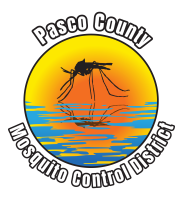Aerial Mosquito Control Operations
Science-Driven Treatments from the Sky
PCMCD uses helicopters and UAS/drones to conduct aerial mosquito control operations that are safe, strategic, and highly effective. These aerial applications allow us to treat large areas quickly and efficiently based on real-time surveillance and scientific data.
Each aerial mission is guided by mosquito population trends and environmental factors, including rainfall, tidal activity, water presence, direct larval sampling, and adult trap collections. Technicians inspect these areas for mosquito larvae or adult activity and use this data to determine which product to apply, what method to use, and when to conduct the treatment for maximum impact.
Why Aerial Treatments Are Necessary
Certain mosquito habitats, such as remote salt marshes or widespread residential areas, can’t be treated effectively with trucks or hand crews. Aerial treatments allow us to rapidly respond to rising mosquito populations, suppress larvae before they hatch, and reduce disease risks throughout the county.
We align treatment strategies with the mosquito’s life cycle:
- Larval treatments prevent emerging adult mosquitoes by targeting them in standing water.
- Adult treatments target flying, biting mosquitoes already active in the area.
Each method uses a specific product and application setup.
Science-Backed Decision Making
All aerial treatments are guided by field data collected by our field staff. We monitor:
- Environmental data - rain gauges, tide levels, temperature, and breeding site persistence
- Larval sampling to confirm the presence of developing mosquitoes
- Adult surveillance trap counts and disease surveillance data to assess adult mosquito populations and public health risk
Treatments are matched to the life stage of the mosquito to maximize effectiveness and minimize non-target impact. The selection of product and timing is critical and based entirely on scientific evidence.


